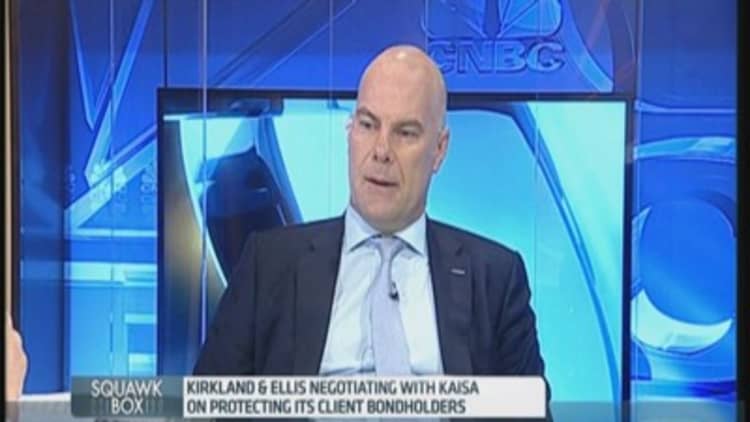A mysterious jump in struggling homebuilder Kaisa Group's debt levels has left investors worried that leverage at other Chinese developers could be much higher than previously estimated.
Mid-sized developer Kaisa disclosed on Monday that its borrowings stood at 65 billion yuan ($10.4 billion), a figure that stumped many analysts given it previously reported that in June last year its debt pile was just under half that level.
One reason for the rise could be that Kaisa's problems, which started last year when officials in Shenzhen stopped it selling apartments at some of its projects, mean it now has to classify home buyers' deposits as borrowings rather than short-term liabilities.
But a more worrying explanation may be that Kaisa had 30 billion yuan of debt it had not previously disclosed and that other developers could have done similar, just as China's housing market is in a slowdown.

"We will be more cautious on China property, because the risk premium will go up - valuations and perceptions will change because of the Kaisa incident," said Brayan Lai, a portfolio manager with One Asia Investment Partners.
Housing glut
An overhang of unsold new homes and nine straight months of house price falls in China's major cities mean investors are already wary about the outlook for developers.
Read MoreChina new home prices drop at record pace
Kaisa's problems have escalated those concerns, given the homebuilder had been seen as a well-financed developer with relatively healthy cash holdings until late last year.
"The Kaisa revelations raise a red flag for the sector," said David Ng, head of China & Hong Kong He said investors will now have to examine whether other developers have hidden liabilities.
"You will have to look beyond the balance sheet for potential contingent liabilities or hidden guarantees that are not reported in the financial statements," Ng added.
Chinese developers' leverage is already estimated to have grown over the past year. Average net gearing in the sector, a measure of leverage, rose to an estimated 83.8 percent in 2014 from 73.2 percent a year ago, based on companies tracked by Barclays.
Last year Chinese developers accounted for 61 percent all high-yield bonds issued by Asian companies, excluding Japan and Australia, in the U.S. dollar market in 2014, according to Thomson Reuters data.
Earlier this month Kaisa was rescued from the brink of becoming the first Chinese property firm to default on its offshore debt after a buyout offer from Sunac China.
It is now trying to persuade its creditors to agree to a debt restructuring plan in order for that deal to proceed.
However the news of its debt holdings, and a disclosure on Tuesday that assets frozen by courts to protect its creditors have risen to more than $2 billion, mean doubts are growing that the Sunac transaction will go ahead.
Kaisa has also disclosed that it may have to repay as much as $5 billion of its debt by the end of this year.
Wee Liat Lee, BNP Paribas Head of Property Research, said he had expected larger developers such as China Overseas Land & Investment and China Vanke to bid for Kaisa, but the developers' debt disclosures probably explain why they did not.
"It is now quite plain what doubts they may have been having about the hidden debts," he said.

